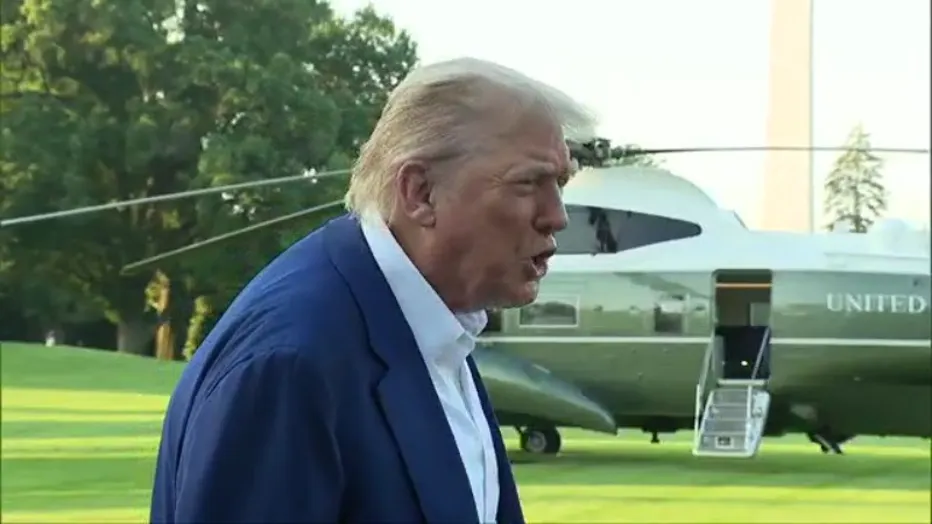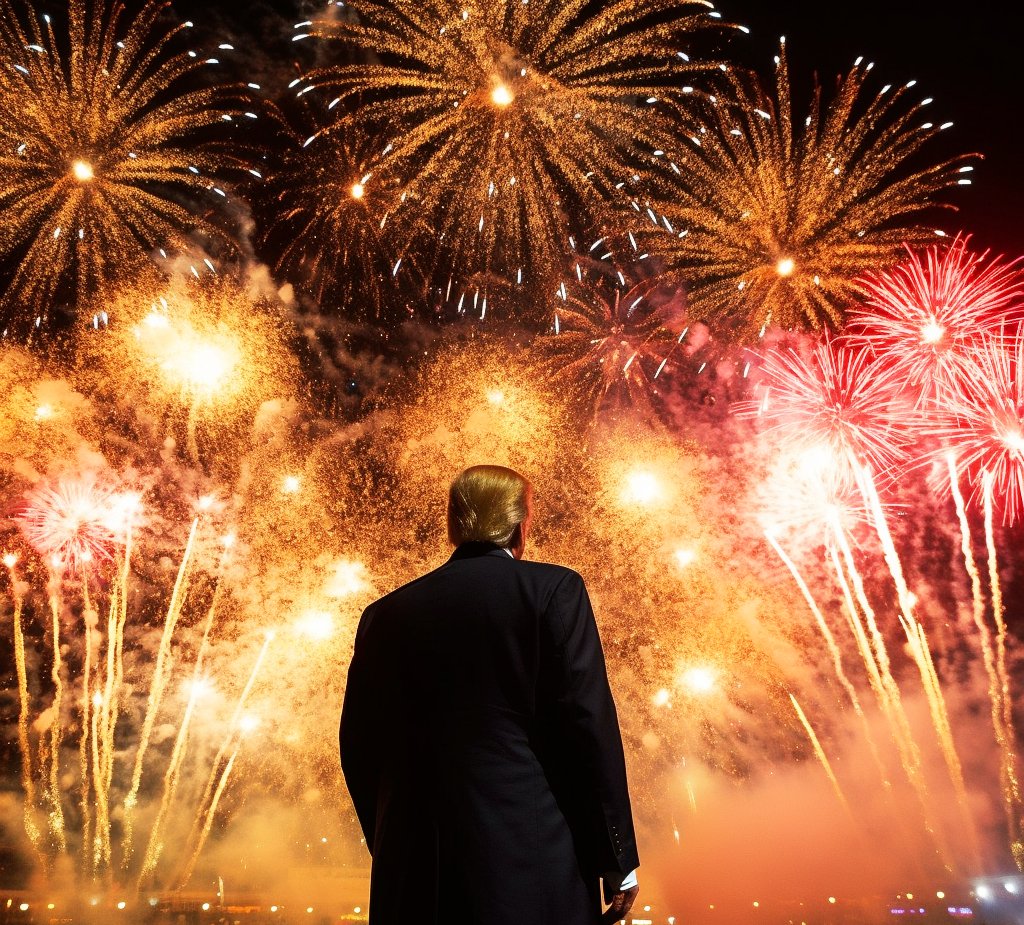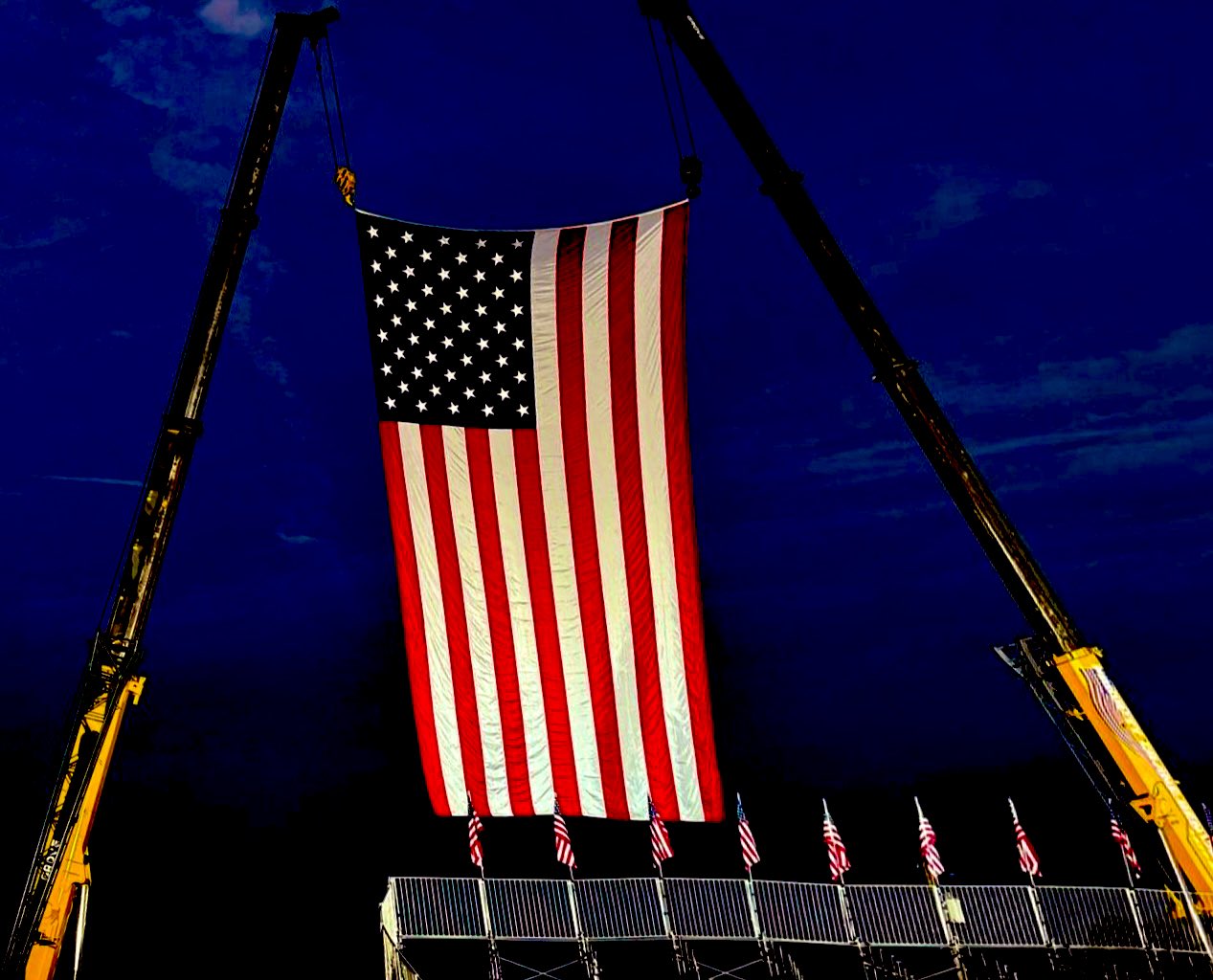U.S.
Philadelphia City Council Officially Looking Into Banning Bullet-Proof Barriers Stores In Dangerous Neighborhoods
Published
8 years agoon

(Via The Daily Wire)
On November 2, Philadelphia Councilwoman Cindy Bass introduced a bill to more closely regulate so-called “beer delis.” These establishments are neither restaurants nor convenience stores, but in-betweens that often sell alcohol — including straight shots of liquor — alongside cigarettes, candy, and various foods, according to Bass.
The bill, which was amended on December 4, calls for local “beer delis” to install restrooms, and provide seating areas for their customers. The bill also asks the Department of Licenses and Inspections (L&I) to issue regulations regarding bullet-proof partitions by January 2021.
Prior to the amendment, the bill called for the complete removal of bullet-proof glass, reading: “No establishment shall erect or maintain a physical barrier.” Following backlash, the legislation was altered to allow the L&I to study the matter for three years, then issue regulations regarding the partitions.
The text of the amended bill that pertains to the glass reads:
By no later than January 1, 2021, the Department of Licenses and Inspections shall promulgate regulations to provide for the use or removal of any physical barrier that requires the persons serving the food in any establishment required to obtain a Large Establishment license … either to open a window or other aperture or to pass the food through a window or other aperture, in order to hand the food to a customer inside the establishment.
The argument from Councilwoman Cindy Bass is that many of these stores exploit legal loopholes in order to masquerade as restaurants while simply selling alcohol.
In a December 11 op-ed, Bass writes: “Would you feel safe with an illegal liquor store next door to you, selling shots of cheap booze at 10 a.m. to loitering alcoholics?”
In Pennsylvania, private owners can’t operate liquor stores. That’s what the state Fine Wine and Good Spirits stores do. But private owners can run restaurants that sell alcohol to their customers to drink while they eat.
Bass notes that aside from alcohol, beer delis sell “candy-flavored cigarillos to get kids hooked on smoking and big boxes of cold medicines that can be turned into street drugs,” adding that these establishments contribute to “drunkenness, loitering, noise, disorder, crime, and violence” in the neighborhoods in which they operate.
The Councilwoman then outlines the loopholes she believes beer delis exploit:
The stop-and-go stores have state liquor licenses as if they were restaurants, but they’re not even close. They are in fact liquor outlets. They don’t have 30 seats; most don’t have any. They don’t prepare or serve food; if you ask, most will show you a single plastic cup of dried Ramen noodles. But for years the ineffective state Liquor Control Board has turned a blind eye to the stop-and-gos’ blatant disregard for the law.
Bass concludes her argument by stating that under her legislation, large establishments with 30 or more seats would be allowed liquor licenses, but no bullet-proof partitions, and smaller establishments that don’t qualify as “restaurants” would no longer be allowed to sell alcohol, but they could retain their partitions:
The stop-and-go owners are complaining that my bill would force them to take down their acrylic glass wall. That’s just false. What the bill simply does is require them to be honest and follow the state law: either become true restaurants (with 30 or more seats) that sell alcohol to customers dining on-site, or admit that they are small convenience stores and stop selling alcohol. The ones that are convenience stores can keep their acrylic glass walls.
Prior to the bill being amended, however, Bass told Fox29 that “the plexiglass has to come down.” She added, “We want to make sure that there isn’t this sort of indignity, in my opinion, to serving food through a Plexiglas only in certain neighborhoods.”
Despite the protestations of many beer deli owners, the City Council voted on Thursday, and the amended bill passed 14-3.
Councilman David Oh expressed his concerns over the bullet-proof glass portion of the bill before the vote on Thursday, saying, “If we take down the safety glass, they’re not changing their business model. They’re not moving. What they will do is purchase firearms. I think that is a worse situation than what we have today.”
In order to clarify Bass’ position regarding plexiglass barriers, The Daily Wire contacted the Councilwoman’s spokesperson, Layla Jones.
When we asked what Bass meant when she said: “We want to make sure that there isn’t this sort of indignity, in my opinion, to serving food through a Plexiglas only in certain neighborhoods,” Jones replied:
As Councilwoman Bass said during her speech yesterday in Council, the clientele at these establishments are not willing customers. They are residents with habits and addictions. These are supposed to be sit-down restaurants, but they operate as a hybrid between a liquor store, drug pharmacy and convenience store. There are no stop-n-go establishments in more affluent Philadelphia neighborhoods. But in vulnerable communities in Philadelphia, store owners feel it’s acceptable to serve limited food and ‘get high’ products through a prison-style plexiglass barrier. If these establishments were selling hypodermic needles which are synonymous with heroin use, there would be an immediate call to shut these places down.
We then asked why businesses might not be allowed after January 1, 2021, to use bullet-proof barriers even if they’re complying with all other legal guidelines, Jones said:
This bill is about conforming city law with state law and creating actual sit-down restaurants in all of Philadelphia’s neighborhoods. This bill is not about plexiglass. Several other regulations including seating for 30 or more patrons, square footage requirements and the installation of publicly accessible restrooms will be required by May 1, 2018 at the latest, before L&I is required to create regulations on the use and removal of plexiglass.
We spent a lot of time and effort on a compromise to this bill, to ease store owner concerns but address community outcry. L&I has until January 2021 to create regulations on the use and removal or plexiglass, and the word “use” suggests that after working on the issue L&I may decide there are instances in which plexiglass is acceptable.
As the Philadelphia Department of Public Health Commissioner Tom Farley testified, plexiglass barriers create a special health risk in sit-down restaurant establishments where food is supposed to be consumed on the premises because of increased choking risks. A barrier limits food service staff members’ access to a choking customer or a customer having an allergic reaction. We want both store owners and consumers to be safe.
In the end, it appears the primary defense for possibly removing bullet-proof glass from “beer deli” businesses that sell food and alcohol in dangerous neighborhoods is it could inhibit employees from helping choking customers.
Politics
President Donald J. Trump on Israel and Iran: “Two Countries Don’t Know What the F*** They’re Doing.”
Published
3 weeks agoon
June 24, 2025
Trump’s Blunt Rebuke of Israel and Iran: A Strategic Display of Control Amid Ceasefire Chaos
On June 24, 2025, President Donald J. Trump delivered a characteristically unfiltered assessment of the faltering ceasefire between Israel and Iran, declaring, “Two countries don’t know what the f*** they’re doing.” The comment, made to reporters as he departed for a NATO summit, underscored his frustration with both nations for violating a fragile truce brokered just a day earlier on June 23, 2025. Far from a mere outburst, Trump’s statement and the actions surrounding it reveal a calculated approach to reasserting U.S. influence over a volatile Middle East conflict, showcasing his ability to navigate and control a complex geopolitical crisis.
The Context: A Ceasefire Undermined
The ceasefire, intended to de-escalate tensions between Israel and Iran, was a significant diplomatic achievement for the Trump administration, signaling a potential pause in a conflict that has long threatened regional stability. However, within hours, Iran launched a strike that killed several people, prompting Israel to respond with a “symbolic attack” on the same day. These violations unraveled the truce, drawing global attention and risking further escalation, particularly given Iran’s nuclear ambitions and Israel’s military resolve.
Trump’s blunt remark came in response to this rapid deterioration. He expressed particular displeasure with Israel, noting that it “unloaded” on Iran shortly after the agreement, undermining the deal he had championed. “I’m really unhappy with Israel,” he told reporters, a rare public rebuke of a key U.S. ally. Yet, his criticism extended to both parties, reflecting his view that their tit-for-tat actions lacked strategic clarity and jeopardized a cycle of violence.
Why Trump Said It: A Strategic Calculus
Trump’s choice of words was no accident. His provocative language served multiple purposes, each reinforcing his ability to steer the situation:
- Reasserting U.S. Authority: By publicly chastising both Israel and Iran, Trump signaled that the United States, under his leadership, remains the dominant force in Middle East diplomacy. His frustration highlighted the U.S.’s role as the ceasefire’s architect and underscored that violations would not be tolerated without consequences. This move reminded both nations of their reliance on U.S. support—militarily for Israel and diplomatically for Iran in avoiding broader sanctions or isolation.
- Pressuring for Compliance: Trump’s bluntness was a calculated pressure tactic. By calling out Israel’s “unloading” and Iran’s initial strike, he aimed to shame both into reconsidering further violations. His urgent appeal to Israel to avoid additional strikes against Iran, labeling such actions a “serious violation” of the ceasefire, was a direct warning to an ally accustomed to significant autonomy. Similarly, his criticism of Iran’s actions reinforced his earlier stance of giving them “chance after chance” to negotiate, signaling that his patience was not infinite.
- Shaping the Narrative: Trump’s colorful language ensured his message dominated global headlines, keeping the focus on his administration’s efforts to broker peace rather than the ceasefire’s collapse. By framing Israel and Iran as directionless, he positioned himself as the clear-headed leader seeking order amid chaos. This narrative was particularly critical as he headed to the NATO summit, where allies would scrutinize his handling of the crisis.
- Balancing Domestic and International Audiences: Domestically, Trump’s tough talk resonated with his base, who value his no-nonsense style. Internationally, it sent a message to adversaries like Iran that he was not afraid to confront allies like Israel, challenging perceptions of unchecked U.S. support for Israeli actions. This balancing act strengthened his leverage in future negotiations.
Trump’s Control: Actions Speak Louder Than Words
Beyond his rhetoric, Trump demonstrated control through decisive actions that underscored his influence over the situation:
- Direct Diplomacy: Prior to the ceasefire, Trump had privately and publicly urged Israel to refrain from striking Iran, emphasizing his desire for a deal to prevent escalation. Despite Israeli Prime Minister Benjamin Netanyahu’s decision to act, Trump’s ability to extract a ceasefire agreement in the first place showcased his diplomatic clout.
- Public Rebuke as Leverage: By openly criticizing Israel, a move described as a “rare public rebuke of an ally,” Trump shifted the dynamic of U.S.-Israel relations. This signaled to Israel that U.S. support, while steadfast, comes with expectations of compliance with American-led initiatives. It also positioned Trump as a neutral arbiter, increasing his credibility with other regional players.
- Pushing for De-escalation: Trump’s comments were paired with a clear call for negotiations to resume, particularly with Iran, to address its nuclear program and prevent further strikes. His insistence that both nations “don’t know what they’re doing” was a strategic jab to nudge them toward the negotiating table, where the U.S. could dictate terms.
- Navigating NATO and Global Opinion: Departing for the NATO summit, Trump used the crisis to project strength to allies wary of U.S. foreign policy under his second term. His ability to manage the ceasefire’s fallout while engaging with global leaders demonstrated his multitasking prowess and commitment to U.S. leadership on the world stage.
The Bigger Picture: A Pattern of Control
Trump’s handling of the Israel-Iran ceasefire breach aligns with his broader foreign policy approach: bold rhetoric, strategic pressure, and a knack for keeping adversaries and allies alike off balance. His critics, such as those on X who argue he has ceded too much control to Israel, overlook the nuance of his strategy. While Israel’s actions may have tested his influence, Trump’s public frustration and diplomatic maneuvering suggest he is far from a bystander. Instead, he is actively shaping the conflict’s trajectory, using the ceasefire’s collapse as an opportunity to reinforce U.S. dominance.
Conclusion
President Trump’s June 24, 2025, statement that Israel and Iran “don’t know what the f*** they’re doing” was more than a soundbite—it was a calculated move to reassert control over a spiraling Middle East crisis. By leveraging blunt rhetoric, public rebukes, and diplomatic pressure, Trump demonstrated his ability to steer the actions of both allies and adversaries. While the ceasefire’s breach exposed the region’s volatility, Trump’s response showcased his strategic acumen, ensuring the U.S. remains the central player in the quest for stability. As he navigates this crisis, his blend of bravado and pragmatism continues to define his approach, proving that even in chaos, he knows exactly what he’s doing.

Donald Trump’s political journey over the last eight years has been a vivid illustration of modern populism, defying conventional political odds. Starting with his 2016 presidential campaign, Trump, a real estate mogul and reality TV star, harnessed populist sentiments to propel his candidacy. His message resonated with many Americans feeling left behind by globalization and economic shifts, promising to restore jobs, combat what he described as unfair trade deals, and prioritize American interests over international cooperation. This populist wave was marked by his direct communication style, bypassing traditional media to connect with voters through rallies and social media, where he spoke of “draining the swamp” in Washington, suggesting a deep-seated distrust in the political establishment.
The struggle of Trump supporters has mirrored this populist movement, characterized by a sense of alienation from what they perceive as a detached political and cultural elite. This group, often labeled pejoratively by some in the mainstream, found in Trump a voice for their frustrations with immigration policies, economic policies favoring global trade over local jobs, and cultural shifts they felt were imposed without their consent. The Trump family, from Melania’s fashion choices to Ivanka’s political involvement, became symbols of this populist resistance against the perceived elitism of politics. The criticism they faced only deepened the solidarity among Trump’s supporters, who saw in his family a reflection of their own battles against the establishment.
The alt-media ecosystem was instrumental in this populist surge, serving as both a battleground and a bastion. Outlets like Breitbart and Infowars, and later platforms like Parler and Truth Social, became the echo chambers where Trump’s narrative of being a victim of political witch hunts and media bias was amplified. These platforms didn’t just report news; they crafted a narrative where Trump’s every move, from policy to personal tweets, was framed as part of a larger fight against a corrupt system. This interaction between Trump, his supporters, and the alt-media has redefined political discourse, showcasing how populism can harness media, both traditional and digital, to challenge and reshape political norms. Trump’s journey has thus not only defied odds but has also redefined what political success looks like in an era where populism can sway elections and influence policy discussions at the highest levels.
Politics
President Trump Returns to Butler to FIGHT for America First
Published
9 months agoon
October 5, 2024
Trump’s Return to Butler, PA: A Symbol of Tenacity and Defiance
Today, former President Donald Trump makes a symbolically charged return to Butler, Pennsylvania, the site where his resilience was tested in an unprecedented manner. This visit, on October 5, 2024, is not just another campaign stop but a poignant reminder of his enduring “FIGHT FIGHT FIGHT” mantra, which has become emblematic of his political persona.
10/4 | BUTLER, PENNSYLVANIA… pic.twitter.com/YradtyIbMR
— Dan Scavino Jr.🇺🇸🦅 (@DanScavino) October 5, 2024
A Historical Backdrop
On July 13, 2024, Butler was thrust into the national spotlight when an assassination attempt was made on Trump during a rally. Surviving with a mere graze to his ear, Trump’s immediate response was to raise his fist, a moment captured in what has now become an iconic image, symbolizing his defiance against adversity. This incident didn’t just scar him physically but also galvanized his supporters, turning Butler into a shrine of sorts for Trump’s resilience.
The Symbolism of the Return
Trump’s decision to return to Butler is laden with symbolism. Here’s why this visit resonates deeply with his campaign ethos:
- Defiance in the Face of Danger: Returning to the site where his life was threatened underscores Trump’s narrative of not backing down. It’s a physical manifestation of his “FIGHT FIGHT FIGHT” ethos, showcasing his refusal to be intimidated by violence or political opposition.
- Political Theatre and Momentum: This rally serves as a masterstroke in political theatre, aiming to convert the attempt on his life into a rallying cry for his supporters. It’s an attempt to reignite the fervor seen in the immediate aftermath of the incident, where his campaign saw a surge in support, portraying him as a fighter against all odds.
- Uniting the Base: By revisiting Butler, Trump not only honors the victims of the incident but also uses the location to unify his base. The rally is expected to be a blend of remembrance and a call to action, emphasizing themes of perseverance, security, and defiance against the establishment’s perceived failures.
- A Message of Strength: For Trump, every appearance since the assassination attempt has been an opportunity to project strength. Returning to Butler amplifies this message, suggesting that neither personal attacks nor political challenges will deter his campaign or his message.
The Broader Impact
The “FIGHT FIGHT FIGHT” mantra has transcended its initial context, becoming a broader call against what Trump describes as systemic failures, from immigration policies to disaster response, as seen in his critiques of the current administration’s handling of events in North Carolina, echoed in his and his allies’ posts on X.
This return to Butler isn’t just about revisiting the site of a traumatic event; it’s a strategic move to encapsulate his campaign’s spirit in one location, making it a pilgrimage of sorts for his supporters. It represents Trump not just as a politician but as a symbol of resistance and persistence, key themes in his narrative of reclaiming America.
In sum, Trump’s rally in Butler today is more than a campaign event; it’s a testament to his campaign’s core message: a relentless fight against adversaries, be they political opponents, critics, or even those who threaten his life. This event is poised to be a significant moment in the 2024 presidential race, leveraging trauma, resilience, and defiance into political capital.

Twenty40 Challenging Linn County for $9 Million in Assessments

BREAKING: ‘RICO in Iowa’ Complaint Amended & Filed Under Duress

RICO in Iowa: Will Frazier’s Battle for Justice

President Donald J. Trump on Israel and Iran: “Two Countries Don’t Know What the F*** They’re Doing.”

Chad Pelley Lawsuit in Shambles – Free Speech Win Relieves Bailey Symonds, Strips Injunction

BREAKING: ‘RICO in Iowa’ Complaint Amended & Filed Under Duress

RICO in Iowa: Will Frazier’s Battle for Justice

President Donald J. Trump on Israel and Iran: “Two Countries Don’t Know What the F*** They’re Doing.”







